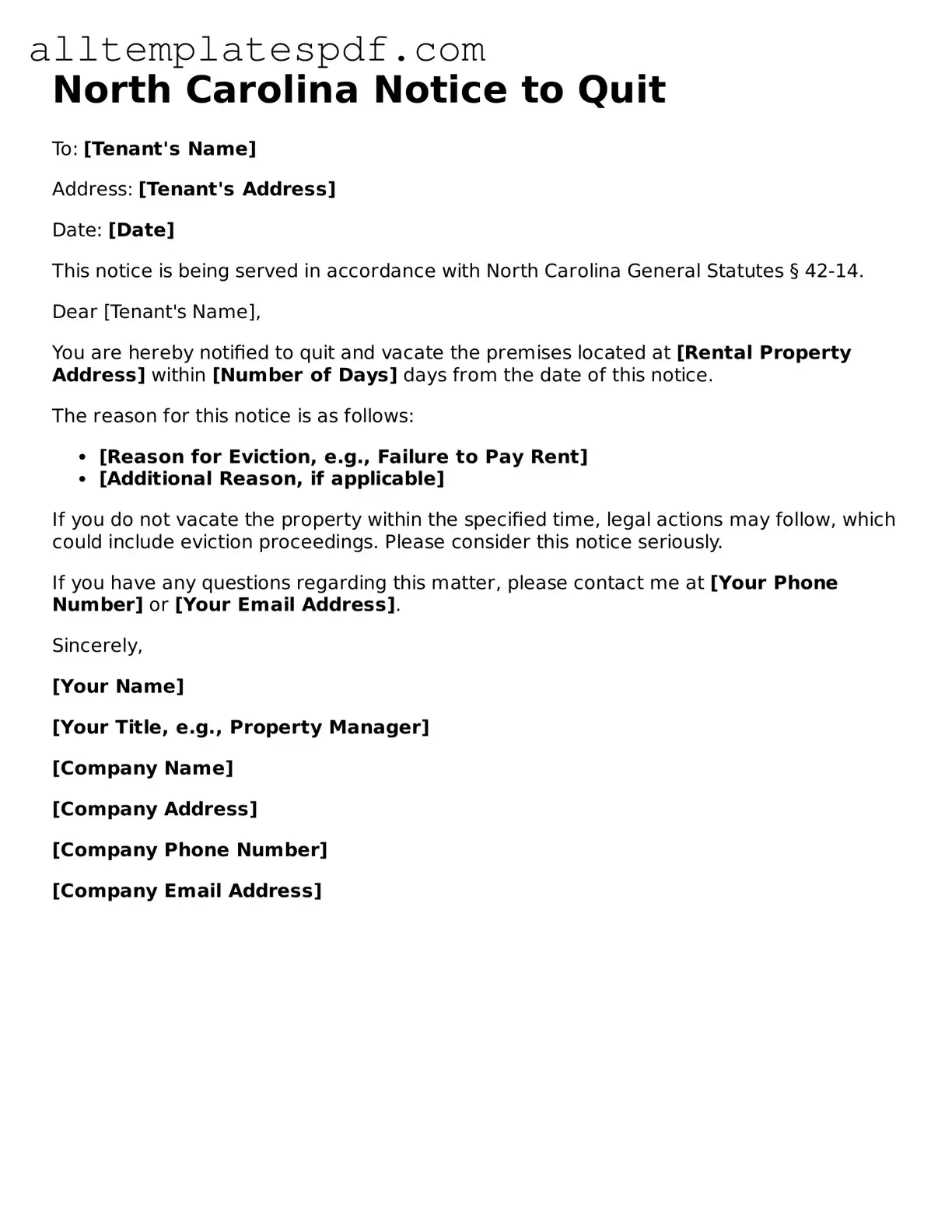Blank Notice to Quit Template for the State of North Carolina
The North Carolina Notice to Quit form is a legal document used by landlords to formally request that tenants vacate a rental property. This form serves as a crucial step in the eviction process, ensuring that tenants are given proper notice before any further legal action is taken. To begin the process of filling out the Notice to Quit, click the button below.
Open Editor
